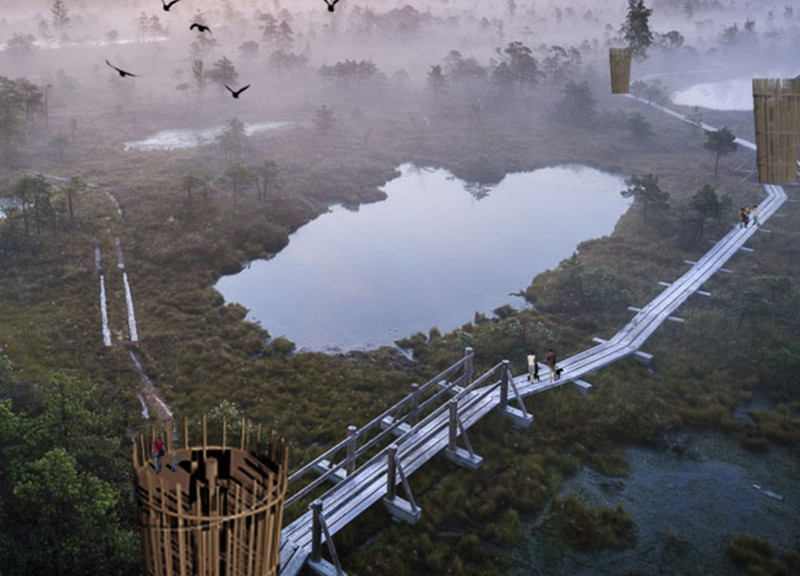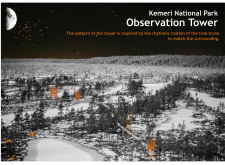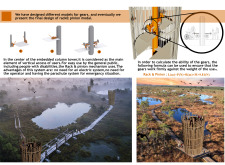5 key facts about this project
Design Approach and Materiality
The project adopts a non-intrusive design that utilizes natural materials to blend seamlessly into the forested environment. Key elements include the use of sustainably sourced wood as the primary construction material, which aligns with environmental sustainability objectives. The design incorporates vertical wooden beams that mimic the form of tree trunks, establishing a dialogue between the structure and its natural surroundings. Steel components are used sparingly for structural support, ensuring that the aesthetic remains light and organic.
The incorporation of glass elements within specific observation areas offers unobstructed views, enhancing the visibility of the rich biodiversity present in the park. This conscious choice of materials and design not only emphasizes durability but also contributes to the overall harmony of the project within the natural landscape.
Engaging User Experience
Accessibility is a fundamental aspect of the Kemeri National Park Observation Tower. The design includes a rack and pinion vertical access mechanism, which facilitates easy movement between the tower's levels and accommodates all visitors, including those with mobility challenges. The pathways that connect the towers are designed to promote interaction with the natural environment, encouraging exploration and engagement.
The varied heights of the observation towers create distinct viewpoints, allowing users to experience the park from different elevations. The design successfully caters to a range of user needs while promoting environmental awareness.
Overall, the Kemeri National Park Observation Tower stands out in its approach to integrating architecture with ecological sensitivity. Its design promotes inclusivity while remaining aesthetically consistent with the park's natural beauty. For a comprehensive understanding of this project, including architectural plans, sections, and innovative design ideas, readers are encouraged to explore the complete project presentation.


























